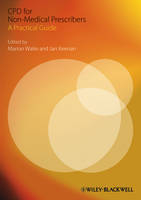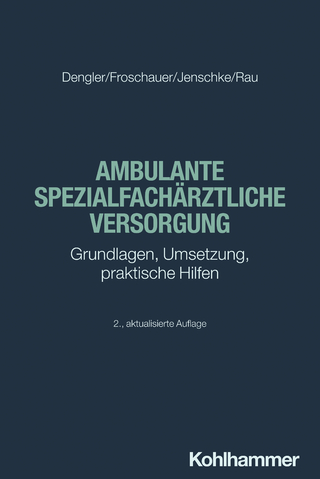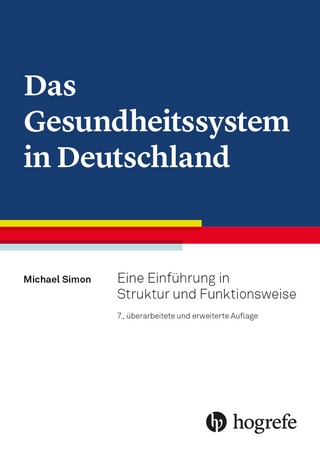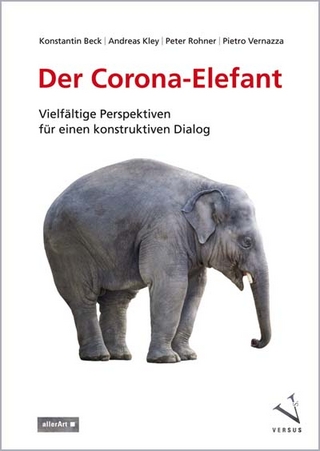
CPD for Non-Medical Prescribers
Wiley-Blackwell (Verlag)
978-1-4051-7885-3 (ISBN)
CPD for Non-Medical Prescribers In this new era of healthcare, the importance of Continuing Professional Development (CPD) cannot be underestimated. Non-Medical Prescribers have a responsibility to themselves, their employer and their patients to keep up-to-date with developments in this fast-moving area of healthcare. This book looks at the current context of CPD in this area and provides guidance for facilitation.
The book is divided into three clear sections. The first looks at general principles of CPD and considers overarching and organisational issues such as clinical governance. The second section looks at specific approaches adopted by individuals/trusts to facilitate CPD, for example e-learning and how to keep up-to-date with pharmacology. The final section is a resource section, which includes a number of usable documents relating to each chapter that identify further resources and include practical ideas, tools and objects.
Includes legal and professional frameworks
Tied in closely with the latest government guidelines and standards, including guidance from the NMC as well as the Royal Pharmaceutical Society of Great Britain (RPSBG)
Includes contributions from health professionals from a variety of backgrounds
Suitable for Non-Medical Prescribers, as well as their managers, practice managers and prescribing leads responsible for providing CPD
Marion Waite is Senior Lecturer in the School of Health & Social Care, Oxford Brookes University, where she leads the Non-Medical Prescribing Course. She is also a visiting diabetes specialist nurse at a GP practice and a nurse prescriber. Jan Keenan is Consultant Nurse in Cardiac Medicine at Oxford Radcliffe Hospitals NHS Trust. She is the Organisational CPD lead and Nursing Lead for non-medical prescribing, and a nurse prescriber.
List of Contributors. Acknowledgements.
Introduction.
Section One: General Principles for Continuing Professional Development for Non-Medical Prescribers.
1 Keeping Up to Date with Legal and Professional Frameworks for Non-Medical Prescribing (Marion Waite).
Introduction.
The law as it applies to medicines.
The law as it applies to non-medical prescribing roles.
Professional standards as applied to non-medical prescribing.
Conclusion.
References.
2 Prescribing Practice from the Employer’s Perspective: The Rationale for CPD within Non-Medical Prescribing (Anne Smith and Sanjay Desai).
Introduction.
The organisational importance of continuing professional development.
Continuing education and continuing professional development.
The manager’s obligation to provide continuing professional development.
Identifying and meeting local learning needs.
Professional guidance.
Organisational responsibility – the role of the Trust’s non-medical prescribing lead.
Meeting organisational and individual needs for CPD.
Identifying opportunities for CPD.
Monitoring CPD as part of appraisal.
Maintaining the service.
Conclusion.
References.
Useful websites.
3 Writing and Maintaining a Non-Medical Prescribing Policy for Your Organisation (Michael Fanning).
Introduction.
Background to clinical governance.
Developing the policy
Clinical governance.
Patient information.
Selection of potential prescribers.
Monitoring practice.
Organisational roles and responsibilities.
Useful contacts.
Final section.
Conclusion.
References.
4 Organising CPD for Non-Medical Prescribers at a Regional Level (Fiona Peniston-Bird).
Introduction.
The structure of the NHS within the United Kingdom.
The national context for the development of non-medical prescribing.
The role of a regional non-medical prescribing facilitator.
The role of Trust NMP leads.
Organising CPD via a local forum.
Delivering CPD via a local forum.
Reflection: providing CPD for non-medical prescribers.
Where are we now?
Commissioning CPD for non-medical prescribers.
Conclusion.
References.
Section Two: Specific Approaches to CPD for Non-Medical Prescribers.
5 Using E-learning for CPD within Non-Medical Prescribing (Marion Waite).
Introduction.
Background.
How can learning technologies be used in practice?
Using a virtual learning environment (VLE).
Planning a blended learning activity.
When things do not go well.
Web 2.0 technologies.
Electronic portfolios.
Review of National Prescribing Centre online resources for non-medical prescribers.
Other online resources.
Building and sharing your own database of online prescribing resources.
Conclusion.
References.
Useful websites.
6 Action Learning and Learning Sets (Jan Keenan).
Introduction.
Action learning.
Who will benefit from action learning?
What kind of organisationmakes action learning a success?
Putting action learning into practice.
Practical experience – learning sets in a single speciality.
Additional benefits of action learning and learning sets.
Conclusion.
References.
7 Keeping Up to Date with Pharmacology (Nicola Stoner).
Introduction.
Background and the need to keep up to date with pharmacology.
Pharmacology education for non-medical prescribers.
Key elements of pharmacology.
Pharmacodynamics.
Pharmacogenetics.
Drug interactions.
Adverse drug reactions.
Pharmacology teaching and learning exercises.
Resources to support prescribers in keeping up to date with pharmacology.
Maintaining current awareness.
Key sources of support and advice.
The role of the supervisory relationship.
Conclusion.
References.
8 Organising CPD for Non-Medical Prescribers in a General Practice Setting (Mandy Fry).
Introduction.
The science and art of medicine in general practice.
The role of professional artistry and building community.
Making the most of existing educational opportunities.
Mentoring and critical friendship
Conclusion.
References.
9 Organising and Running a Journal Club for Non-Medical Prescribers (Dan Lasserson).
Introduction.
Why run a journal club and what makes them effective?
Organising a journal club.
Running a journal club.
What skills do people need to take part?
Finding research to discuss in a journal club.
Presenting and discussing research at a journal club.
Conclusion.
References.
Further reading.
Useful websites.
Section Three: Key Resources and Practice Examples for Non-Medical Prescribers.
Appendix 1 Key Resources for Keeping Up to Date with Legal and Professional Frameworks for Non-Medical Prescribing.
1:1 Useful websites.
1:2 Example job description that includes non-medical prescribing as a key element of the role.
1:3 Acknowledgements.
1:4 Answers to ‘Test your knowledge about the law as it applies to non-medical prescribing’ quiz.
Appendix 2 Prescribing Practice from the Employer’s Perspective: The Rationale for CPD within Non- Medical Prescribing.
2:1 Useful websites.
2:2 Example of a clinical governance tool for a health-care organisation to support nonmedical prescribing.
2:3 Acknowledgements.
Appendix 3 Writing and Maintaining a Non-Medical Prescribing Policy for Your Organisation.
3:1 Useful websites.
3:2 Example non-medical prescribing policy for a health-care organisation.
3:3 Acknowledgments.
Appendix 4 Organising CPD for Non-Medical Prescribers at a Regional Level.
4:1 Useful websites.
4:2 How to organise groupwork for a non-medical prescribing CPD event.
4:3 How to facilitate a networking session for a non-medical prescribing CPD event.
4:4 Acknowledgements.
Appendix 5 Using E-learning for CPD within Non-Medical Prescribing.
5:1 Useful websites.
5:2 JISC Effective E-learning Planner.
5:3 Acknowledgements.
Appendix 6 Action Learning and Learning Sets.
6:1 Making the connections – using healthcare professionals as prescribers to deliver organisational improvements.
6:2 Acknowledgements.
6:3 A prescribing case history presented during an action learning group.
6:4 Examples of good practice in keeping prescribers up to date with current evidence and practice.
Appendix 7 Keeping Up to Date with Pharmacology.
7:1 Useful websites.
7:2 Answers to pharmacology self-test multi-choice questions.
7:3 Acknowledgements.
Appendix 8 Organising CPD for Non-Medical Prescribers in a General Practice Setting.
8:1 Prescribing points.
Appendix 9 Organising and Running a Journal Club for Non- Medical Prescribers.
9:1 Example of how to use PICO to build a search strategy.
9:2 Acknowledgements.
Index.
| Erscheint lt. Verlag | 29.12.2009 |
|---|---|
| Verlagsort | Hoboken |
| Sprache | englisch |
| Maße | 173 x 246 mm |
| Gewicht | 463 g |
| Themenwelt | Medizin / Pharmazie ► Gesundheitswesen |
| Medizin / Pharmazie ► Pflege | |
| ISBN-10 | 1-4051-7885-X / 140517885X |
| ISBN-13 | 978-1-4051-7885-3 / 9781405178853 |
| Zustand | Neuware |
| Haben Sie eine Frage zum Produkt? |
aus dem Bereich


